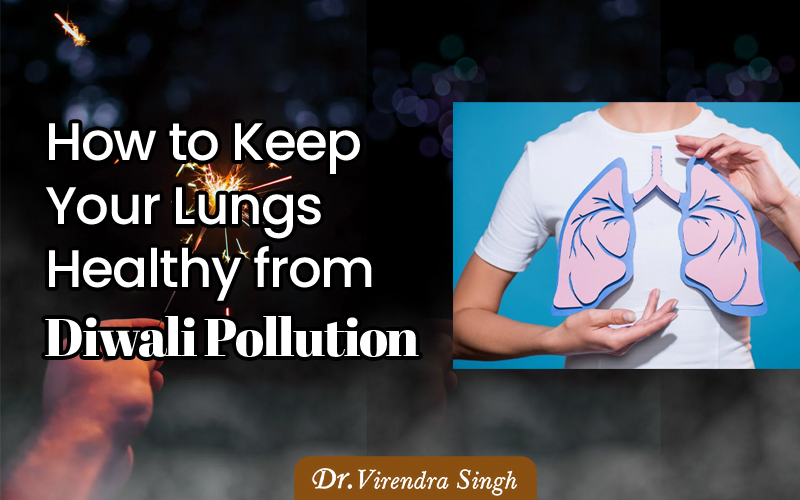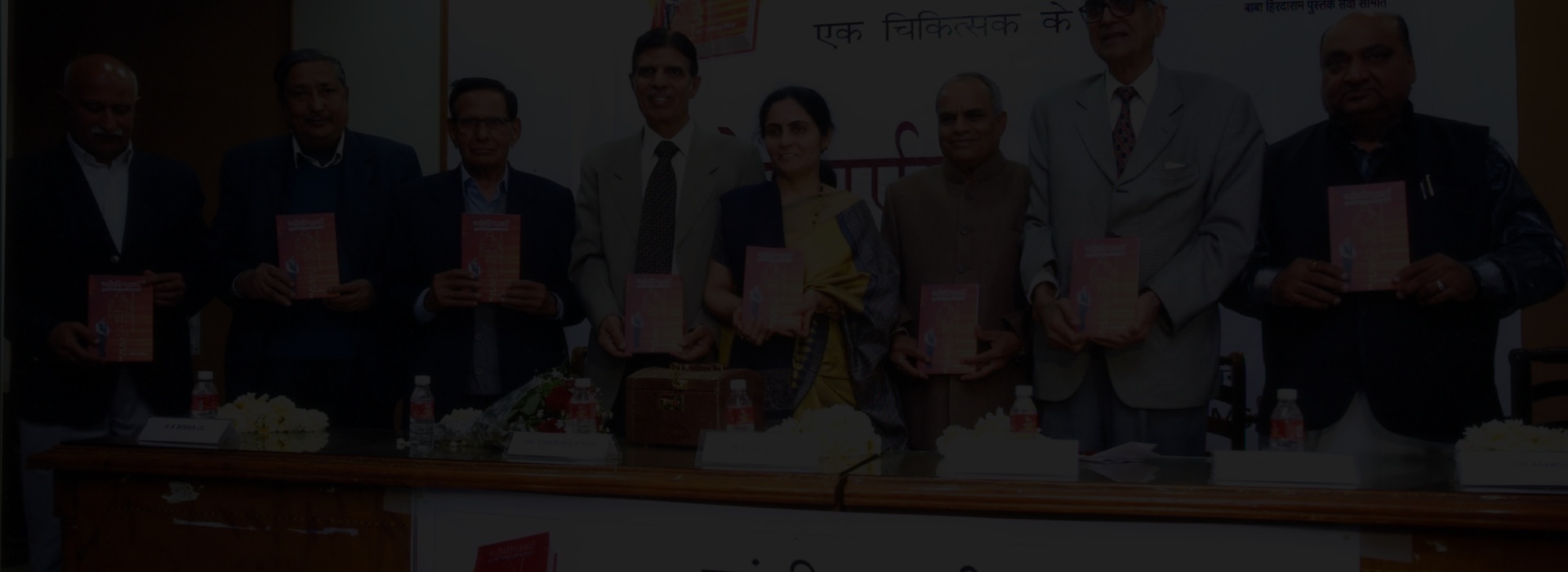
One of the most popular festivals in India is Diwali, which is marked by lighting lamps and Diyas, creating rangolis, and indulging in delicious food, particularly desserts. The highlight of Diwali is lighting firecrackers, a tradition celebrated by people of all groups and faiths to start the celebrations. Unfortunately, while the colors and lights are dazzling, they also come at a huge cost, considering how they affect our health. Everyone is at risk from the poisonous particles that firecrackers leave behind, but this is especially true for those who already have respiratory diseases like bronchitis, asthma, or chronic obstructive pulmonary disease (COPD).
The World Health Organization (WHO) states that every year around Diwali, air pollution levels rise to unsafe and dangerous levels, particularly in Delhi, the National Capital Region (NCR), and other major cities. Dr. Virendra Singh, a distinguished pulmonologist, offers crucial guidance on how to protect your lungs from the harmful effects of Diwali pollution. He recommends an assortment of preventive steps to protect respiratory health as the air quality deteriorates as a result of firecrackers and more haze.
He suggests utilizing air purifiers to keep indoor air clean and staying indoors during hours of high pollution. To filter out tiny particulate matter (PM2.5), which can irritate the lungs, those going outside must wear a N95 mask. According to Dr. Virendra Singh emphasizes the importance of staying hydrated and consuming antioxidant-rich foods, such as vegetables, and fruits, to help combat the oxidative stress caused by pollutants.
How do Fumes from Firecrackers Affect the Lungs?
According to research that was published in the Journal of Hazardous Materials, gunpowder is combined with a variety of metallic particles, such as aluminum, barium, copper, strontium, antimony, lead, magnesium, and potassium, to create many colors and effects that fireworks produce. These metallic particles burn and produce a lot of smoke, which shreds them into particles even smaller than a few microns. If inhaled, these metallic particles have the potential to lodge profoundly in the lungs, causing poisoning.
The six most popular firecrackers in India—snake tablets, string, ground spinners, flower pots, and garland of crackers—produce a lot of particulate matter (PM), which are microscopic particles or droplets of pollution in the air that are typically visible after combustion, according to an article published in Lung India, the official journal of the Indian Chest Society. Exposure to this particulate matter can result in both short-term and long-term health effects. These negative consequences are more common in young people, the elderly, and those with underlying medical disorders including heart disease or chronic lung ailments.
Reactive oxygen species are created when air pollutants such as PM2.5, PM10, sulfur dioxide, and carbon monoxide enter the body. These species cause oxidative stress to start in the lungs. The body’s immune system responds to this by sending immune cells to the lungs, which causes inflammatory responses in the lungs.
Who is at High Risk?
Some groups of people are at higher risk of developing issues due to cracker smoke. This includes pregnant women, older adults, immunocompromised individuals, and people with chronic conditions such as chronic Kidney disease (CKD) and chronic lung diseases.
What can be Done to Protect the Lungs During this Festival?
The National Green Tribunal (NGT) has prohibited the use of crackers on Diwali in a number of regions of the nation in order to stop pollution from getting worse. This will be very helpful in addressing the issues with air quality at this season of the year. Meanwhile, there are a few things one may do to shield their lungs from dangerous pollutants:
- Avoid lighting Diyas and candles indoors, which keep indoor pollution in check. Sustainable LED lights are an option since they don’t emit any particulates and provide lovely lighting for the home.
- During the festival, try to spend as much time indoors as you can. Opening windows and doors will let outside airborne pollutants into your home.
- Wearing a high-quality mask is required if one must leave their home, ideally one of the N95, N99, or N100 varieties because they are the best at removing microscopic particulates from the air.
- Considering the current state of the air in many major Indian cities, it would be wise to get an air purifier. Air purifiers filter out the pollutants, toxins, and allergens from indoor air.
- Eat healthy and consume foods loaded with antioxidants and vitamin C-rich foods (amla, lemon, and tomatoes), vitamin E, vitamin D, turmeric, and omega-3 fatty acids as they may help neutralize the effects of pollutants in the body by reducing the oxidative stress.
- Select sweets that contain jaggery (rather than refined sugar) as it is an excellent source of iron and can raise blood hemoglobin levels, which increases the blood’s overall ability to carry oxygen.
- Individuals who already have respiratory diseases need to always have their nebulizers, emergency medications, and other medical supplies on hand.
- Anyone experiencing breathing difficulties, wheezing, or a chronic cough should see a physician.
This Diwali, many cities are following the government’s lead and celebrating the festival with lights and sweets instead of firecrackers. This could significantly benefit persons with lung disorders or those who are at high risk, as well as help decrease the levels of air pollution in our towns and neighborhoods. It may be recommended to consult Dr. Virendra Singh right away and not wait for their condition to get worse if you have been afflicted despite taking precautions and are experiencing worsening during or after Diwali.
FAQs
Does Diwali cause air pollution?
Yes, burning firecrackers during Diwali pollutes the air so much that breathing becomes hazardous.
Why do some people experience difficulty breathing during Diwali?
Pollution from fireworks in Diwali contributes significantly to pollution and exacerbates respiratory conditions such as asthma and chronic pulmonary illnesses.
How can we reduce Diwali pollution?
Green crackers, which are manufactured with fewer hazardous ingredients and chemicals, can help cut down on pollution during Diwali. By keeping out dust, it contributes to less pollution.
What is the healthiest thing that is good for the lungs?
Eating a diet rich in foods and liquids that are high in nutrients will help to maintain, repair, and shield your lungs over time.
How to cleanse your lungs naturally?
Steam therapy is a natural way to purify your lungs. It will assist you in managing your cough and clearing your lungs of mucus.
